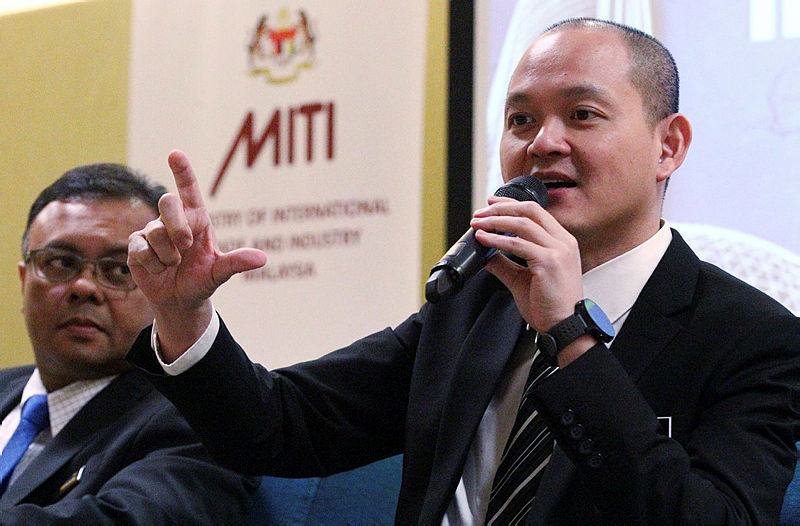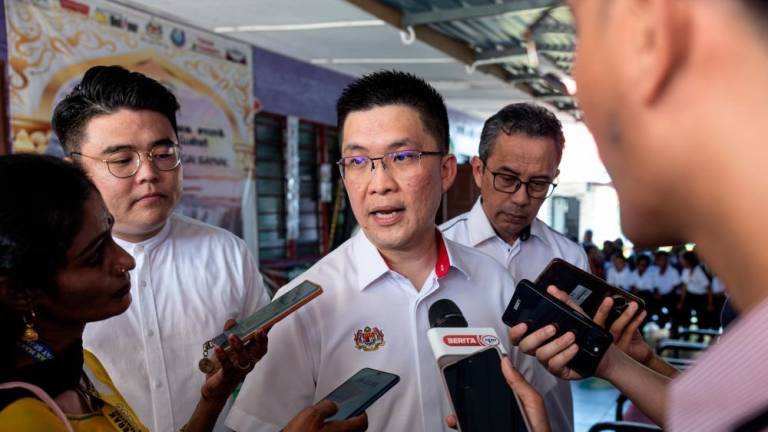PETALING JAYA: “We have a unique window of opportunity to spur the growth of the Electrical and Electronics (E&E) Industry in Malaysia for decades to come,” Deputy Minister of International Trade and Industry Dr Ong Kian Ming (pix) said today.
Apple is mulling a 15%-30% supply chain shift out of China and the fact that Southeast Asia was a potential relocation destination created a lot of media interest in Malaysia.
“Datuk Seri Wong Siew Wai, chairman of the E&E Productivity Nexus is absolutely correct in pointing out, in a recent article, that the E&E sector in Malaysia is at a crossroads,” Ong said in a statement today.
“Domestically, with the change in government in Malaysia in 2018, and externally, with global uncertainties as a result of the US-China frictions, there are many challenges and perhaps more opportunities for the E&E sector in Malaysia.”
Ong said the government and industry partners have to work together in order to capture these opportunities.
“The development of the E&E sector is at a leading edge of an increasingly complex and sophisticated Malaysian economy,” Ong said.
“What used to be a sector dominated by MNCs (Multinational Corporations) has shifted to one where LLCs (Limited Liability Companies) and SMEs (Small and Medium-sized Enterprises) play an increasingly important role.
“Some of the local SMEs which started off being suppliers to the MNCs in Penang have grown into large listed entities which are able to do their own R&D and venture into new markets abroad. Some of the more well-known names include Vitrox, Inari Amerton, Pentamaster and the recently listed Greatech and TT Vision.”
Ong pointed out that some of the electronic manufacturing services (EMS) companies in Johor have also grown to be regional players as a result of their business with big MNCs such as Dyson.
VS Industry, ATA, SKP Resources and Denko have grown and will continue to grow as part of this supply chain as companies such as Dyson diversifies into other products such as its electric car project which will be based in Singapore but which will source for components from around the region including from Johor-based EMS companies, he added.
“As these MNCs have expanded their E&E operations in Malaysia, they have also diversified into services related activities such as regional / global procurement, human resource and accounting administration and IT services for their global operations,” he said.
“This has led to a steady increase in the number of principal hub operations in the manufacturing services sector for these E&E companies. Examples include Smart Modular, Sharp Corporation, Osram, Broadcom (Avago Technologies), and Integrated Device Technology Sdn Bhd.
“There is also a small but growing home grown sector in the higher value-added segments of the E&E sector including R&D activities such as Integrated Circuit (IC) design. Companies such as Infinetics, Experia and Oppstar Technology, which were started by Malaysians who were formerly working for MNCs, are now at a turning point in terms of taking the next leap in their scope and scale of R&D activities.”
Ong pointed out that the E&E sector’s contribution to the overall health of the country’s economy goes far beyond its 5.4% share of GDP in 2018 (RM83b out of a RM1.4 trillion economy).
It is, by far, the largest driver of exports in Malaysia. 38.1% of the almost RM1 trillion in exports in 2018 came from the E&E sector. Manufactured petroleum products come in at a distant second with 7.7% of total exports in 2018, he added.
“Of the RM120.5b trade surplus enjoyed by Malaysia in 2018, 99% or RM119.2b was generated by the E&E sector,” Ong said. “Without the contribution of the E&E sector, Malaysia would have experienced the ‘twin deficit’ phenomenon – a budget as well as a trade deficit and this would likely have had an effect on foreign investor confidence.
“Many would be surprised to learn that Malaysia’s largest export to China is not palm oil or agriculture or petroleum products but products from the E&E sector. This is also one of the few sectors where Malaysia enjoys with trade surplus vis-à-vis China.”













